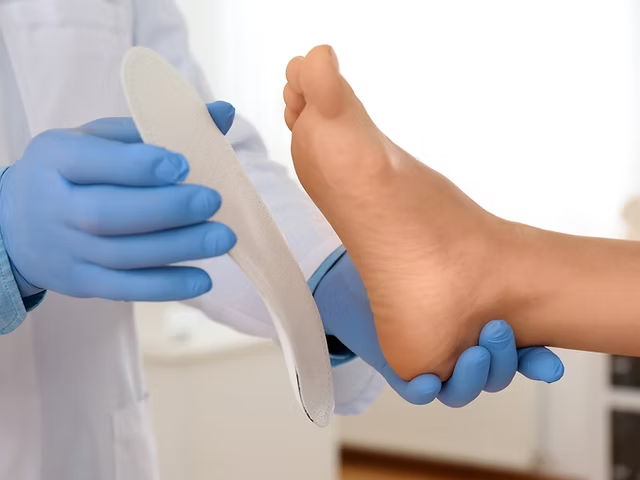
02 Sep What To Expect During Your First Visit to a Podiatrist
Visiting a podiatrist for the first time can feel unfamiliar, but knowing what lies ahead helps you prepare and makes the appointment more productive. A podiatrist specializes in diagnosing and treating conditions affecting your feet, ankles, and lower legs. Your first visit typically involves a comprehensive evaluation, discussion of your symptoms, and potentially some diagnostic testing. This appointment serves as the foundation for your treatment plan and helps establish a relationship with your healthcare provider.
How Should Patients Prepare?
Taking a few simple steps before your appointment helps your podiatrist provide the most effective care. Preparation allows you to make the most of your time together and gives your doctor the information needed to understand your condition fully.
- Gather your medical history: Bring a list of current medications, previous surgeries, and any relevant medical conditions. Include information about allergies and family history of foot problems.
- Document your symptoms: Write down when your symptoms started, what makes them better or worse, and how they affect your daily activities. Note the location and intensity of any pain or discomfort.
- Bring appropriate footwear: Wear or bring the shoes you typically use, especially any that cause discomfort. Your podiatrist will examine how your shoes fit and wear.
- Compile insurance information: Bring your insurance card and any referrals from other doctors. Verify your coverage and copay requirements beforehand.
- List your questions: Write down any concerns or questions you want to discuss during your visit.
Remember to arrive a few minutes early to complete any remaining paperwork. This preparation time allows you to settle in and review your information before meeting with the podiatrist.
What Happens During Initial Evaluation?
The initial evaluation begins with a detailed discussion about your symptoms and medical history. Your podiatrist will ask about your pain levels, when symptoms occur, and which activities trigger discomfort. This conversation helps identify potential causes and guides the physical examination.
The physical examination involves looking at your feet, ankles, and legs while you’re sitting and standing. Your podiatrist will check your skin, nails, and overall foot structure. They may also observe how you walk to assess your gait and identify any movement patterns that contribute to your symptoms.
Your doctor will test your range of motion, muscle strength, and sensation in your feet and ankles. They might press on specific areas to locate sources of pain or tenderness. The examination also includes checking your circulation and reflexes to get a complete picture of your foot health.
What Diagnostic Tests May Be Needed?
Your podiatrist may recommend diagnostic tests based on your symptoms and examination findings. These tests provide detailed information that helps confirm a diagnosis and guide treatment decisions.
- X-rays: These images show bone structure and can reveal fractures, arthritis, or bone spurs. X-rays help diagnose problems with alignment and joint spacing.
- Ultrasound: This test uses sound waves to create images of soft tissues like tendons, ligaments, and muscles. It can identify inflammation, tears, or other soft tissue problems.
- MRI scans: Magnetic resonance imaging provides detailed pictures of both bones and soft tissues. MRIs help diagnose complex conditions affecting multiple structures in your foot or ankle.
- Blood tests: These tests can identify infections, inflammatory conditions, or metabolic disorders that affect your feet.
- Gait analysis: Some podiatrists use specialized equipment to analyze how you walk and identify biomechanical issues.
Not every patient needs diagnostic testing during their first visit. Your podiatrist will explain which tests, if any, would be helpful for your specific situation and what the results might reveal about your condition.
Visit a Podiatrist
Your first visit to a podiatrist is key to addressing foot and ankle concerns, as it involves a thorough evaluation and possible diagnostic tests to create an effective treatment plan. Knowing what to expect can ease anxiety and help you take an active role in your care. Don’t let foot pain hold you back from daily activities. Schedule a consultation with a qualified podiatrist today and take the first step toward healthier, more comfortable feet.

No Comments